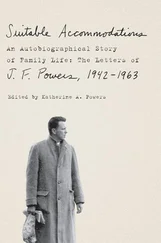Dramatic changes in family structures across the twentieth century revealed that the nuclear family was neither universal nor permanent. Parsons did not predict the dramatic rise in divorce rates by the end of the twentieth century. In the USA, the number of households with two parents and children declined by 20% between the 1960s and 1990s (Casper and Bianchi 2002:11 and 99). And in 1950, 93% of children in the US lived in a nuclear family, while only 6% lived with only their mother and 1% with only their father. By 1998, 73% lived in a nuclear family, 22% with only their mother and 5% with only their father (Casper and Bianchi 2002:99). Similar changes occurred in Europe. More recently, for example, 66% of children in Denmark aged 11–15 were not living with two parents by 2006, while in France it was 73%, in Hungary it was 74%, in Ireland it was 81%, and in Spain 84% (Lappegard 2017). Similar demographic transformations occurred transnationally (for example in Europe, Latin America, North America and Southeast Asia), with higher births outside marriage, increasing rates of cohabitation, and rising divorce rates occurring until the first decade of the twenty-first century (Lesthaeghe 2010). This demographic trend diverges from the mid-twentieth-century vision of the family promoted by structural functionalism.
These trends indicate that social attitudes and behaviour changed dramatically during the twentieth century and beyond. However, certain traditional family values and norms endure. This is illustrated in the next chapter which engages with recent research that demonstrates the importance of continuity and connectedness among family members. One of the major distinctions between traditional and more recent approaches to families, households and individuals is the shift away from the idea of ‘the family’ as a social institution governed by rigid moral conventions towards an idea of family and wider personal life as diverse and fluid sets of social customs and practices. The following chapters indicate that the focus today, in sociological debates, is on interactive processes and the agency of individuals and family members in relation to the social constraints of gender, sexuality, generation, social class, race, ethnicity and migration.
Questions for Reflection and Discussion
1 (1) Summarize the main critique that Engels elaborates in response to the dominant anthropological studies on mating and kinship from the nineteenth century.
2 (2) What are the main shortcomings of Parsons’ functional approach for an understanding of intimate lives and gender relations in contemporary societies?
3 (3) Discuss this sentence from Simone de Beauvoir’s The Second Sex (1972 [1949]): ‘One is not born, but rather becomes, a woman.’
4 (4) What are the key differences between the culture of poverty and the strength resiliency approaches?
5 (5) What are the main contributions of late twentieth-century feminist scholarship to current debates on family and intimate relations? Consider relevant sociological examples.
Конец ознакомительного фрагмента.
Текст предоставлен ООО «ЛитРес».
Прочитайте эту книгу целиком, купив полную легальную версию на ЛитРес.
Безопасно оплатить книгу можно банковской картой Visa, MasterCard, Maestro, со счета мобильного телефона, с платежного терминала, в салоне МТС или Связной, через PayPal, WebMoney, Яндекс.Деньги, QIWI Кошелек, бонусными картами или другим удобным Вам способом.












